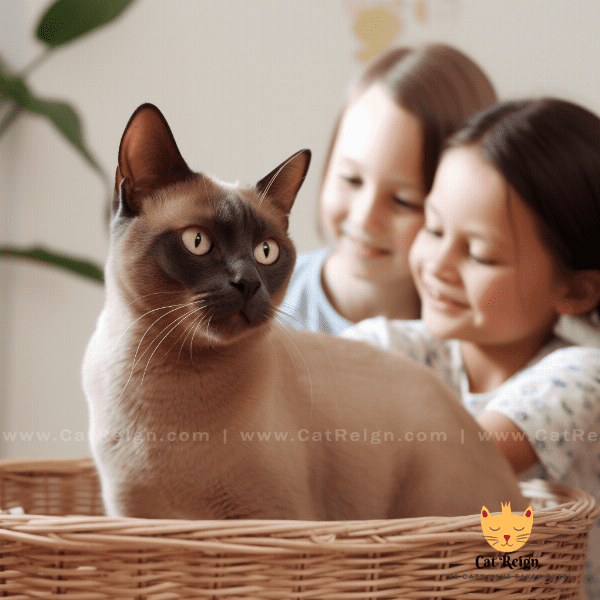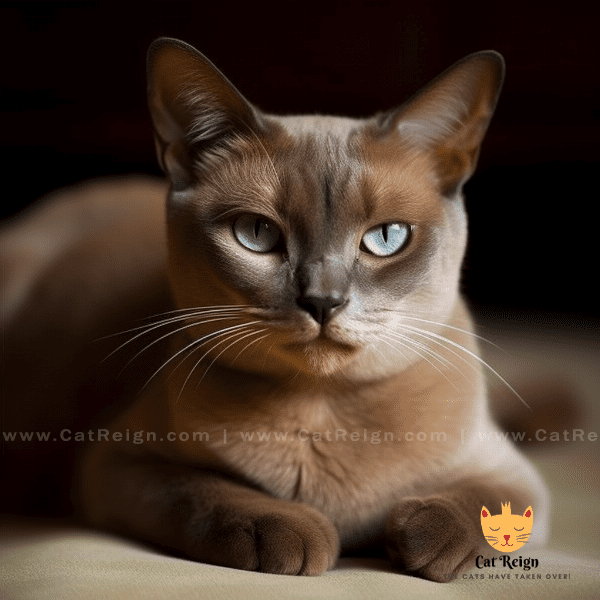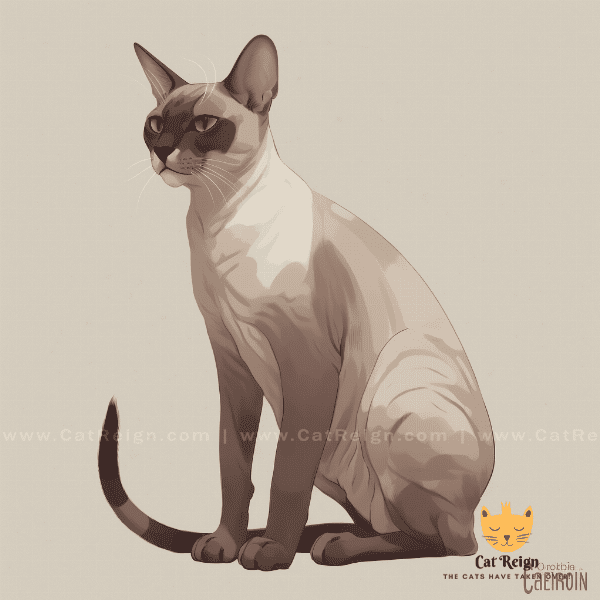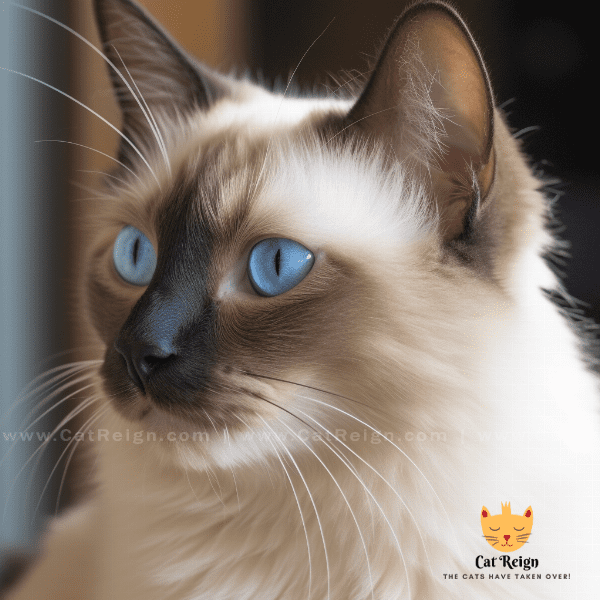Table of Contents
- Origin and History of Burmese Cats
- Physical Characteristics of Burmese Cats
- Personality Traits of Burmese Cats
- Caring for Your Burmese Cat: Diet and Nutrition
- Exercise and Playtime for Burmese Cats
- Grooming Your Burmese Cat
- Common Health Issues in Burmese Cats
- Training Your Burmese Cat: Tips and Tricks
- Burmese Cats and Other Pets: Compatibility Guide
- Finding the Perfect Burmese Cat for Your Home.
Origin and History of Burmese Cats
Burmese cats are one of the oldest known breeds of domestic cats. According to records, these cats were originally from Southeast Asia, specifically from Burma (now known as Myanmar). The Burmese Cat is known for its short, shiny coat and expressive eyes.
Early Origins
The exact origin of Burmese cats is unknown, but they are believed to have been bred by Burmese priests as far back as the 14th century. These cats were highly revered by the Burmese people and were often given as gifts to foreign dignitaries.
Introduction to the Western World
Burmese cats were first introduced to the Western world in the late 19th century. The first Burmese cat to arrive in England was Wong Mau, a brown cat with yellow eyes. Wong Mau was brought to San Francisco in 1930 by Dr. Joseph Thompson, who was intrigued by the cat’s unique appearance.
In the 1940s, Burmese cats were imported to Britain from the United States, and the breed became increasingly popular among cat fanciers. Eventually, the Burmese cat was recognized as a distinct breed by cat associations in both the United States and Britain.
Characteristics of Burmese Cats
Burmese cats are known for their affectionate nature and intelligence. They have a distinctive appearance, with a rounded head, expressive eyes, and a muscular body. Burmese cats come in a variety of colors, including brown, blue, chocolate, and lilac.
Burmese cats are also known for their playful personalities and enjoy playing with toys and interacting with their owners. They are a social breed and thrive on human attention.
Conclusion
In conclusion, Burmese cats have a long and fascinating history, beginning in Southeast Asia and spreading to the Western world. They are a beloved breed of cat, known for their distinctive appearance, affectionate nature, and playful personalities. If you are considering adding a cat to your household, a Burmese cat may be a wonderful choice for you.
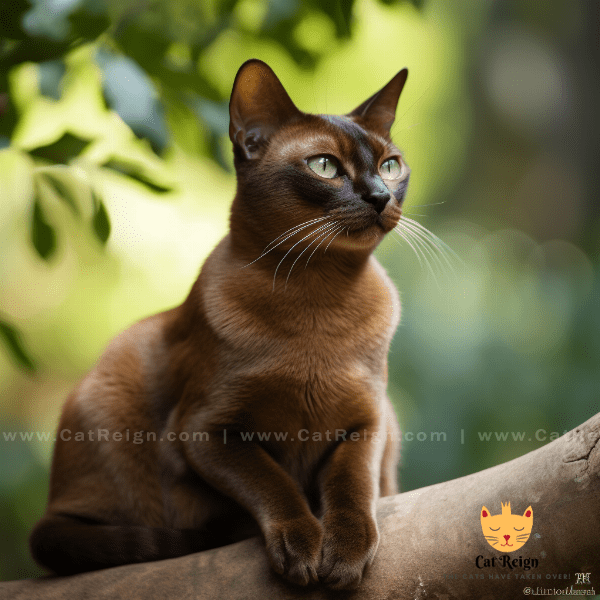
Physical Characteristics of Burmese Cats
Burmese cats are medium-sized cats with a distinctive appearance. They have a muscular build and a short, shiny coat that requires minimal grooming. Here are some of the physical characteristics that make Burmese cats unique:
Body Type
Burmese cats have a compact and muscular body with a broad chest and rounded shoulders. They have strong legs and round paws. Their tails are medium-length, with a rounded tip.
Coat and Colors
Burmese cats have a short, fine, and shiny coat that requires minimal grooming. They come in a variety of colors, including brown, blue, chocolate, and lilac. The color of their coat is determined by their genetics.
Facial Features
Burmese cats have a round face with expressive eyes and a short, broad nose. They have a strong jawline and a well-defined chin. Their eyes are large and round, and their ears are medium-sized and rounded.
Size and Weight
Burmese cats are a medium-sized breed, weighing between 8 and 12 pounds. They have a sturdy build, and their muscular body makes them heavier than they appear.
Conclusion
In conclusion, Burmese cats have a distinctive physical appearance that sets them apart from other breeds. They have a compact and muscular body, a short, shiny coat, and a round face with expressive eyes. If you are considering adopting a Burmese cat, it is important to understand their physical characteristics to ensure that they are a good fit for your lifestyle and home.
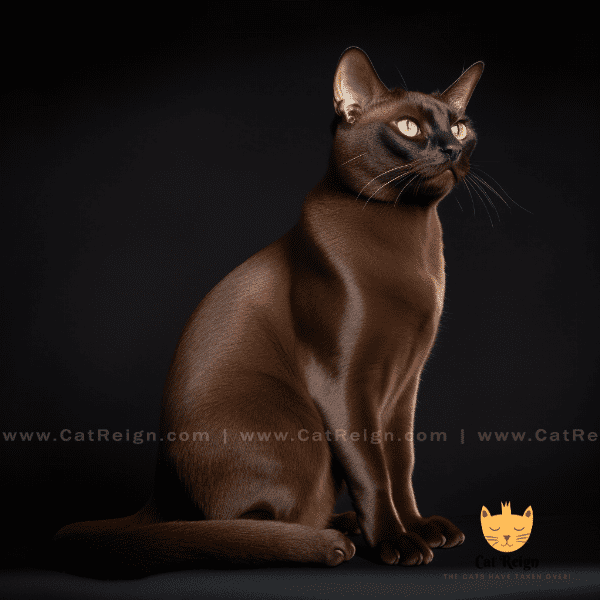
Personality Traits of Burmese Cats
Burmese cats are known for their affectionate and outgoing personalities. They are social cats that enjoy being around people and other pets. Here are some of the personality traits that make Burmese cats unique:
Affectionate and Loving
Burmese cats are known for their affectionate and loving personalities. They enjoy cuddling and will often seek out their owners for attention. They are also known for their purring, which is a sign of contentment and happiness.
Playful and Energetic
Burmese cats are playful and energetic cats that enjoy playing with toys and interacting with their owners. They are known for their acrobatic abilities and will often jump and climb to play with toys or explore their environment.
Intelligent and Curious
Burmese cats are intelligent and curious cats that enjoy learning and exploring their environment. They are quick learners and can be trained to perform tricks or walk on a leash. They are also known for their curious nature and will often explore every nook and cranny of their home.
Vocal and Communicative
Burmese cats are a vocal breed and will often communicate with their owners through meowing, chirping, or trilling. They enjoy talking and will often respond when spoken to.
Conclusion
In conclusion, Burmese cats are a social and affectionate breed that make wonderful pets. They are known for their playful and energetic personalities, intelligence, and curious nature. If you are considering adopting a Burmese cat, it is important to understand their unique personality traits and to provide them with plenty of attention, playtime, and love.
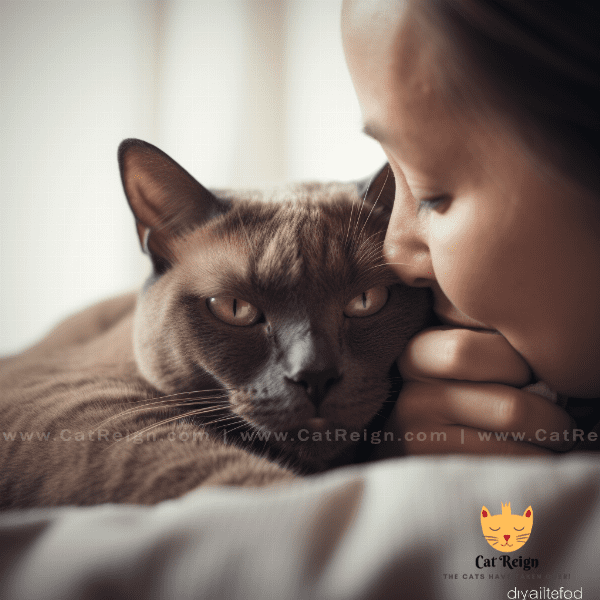
Caring for Your Burmese Cat: Diet and Nutrition
Proper nutrition is essential for the health and well-being of your Burmese cat. Feeding your cat a balanced and nutritious diet is important to maintain their energy levels, promote healthy growth, and prevent health problems. Here are some tips for caring for your Burmese cat’s diet and nutrition:
Choosing the Right Food
When choosing food for your Burmese cat, it is important to select a high-quality cat food that is rich in protein, vitamins, and minerals. Look for cat food that is specifically formulated for adult cats or kittens, depending on the age of your cat. Avoid giving your cat human food, as this can upset their digestive system and lead to health problems.
Feeding Schedule
Establishing a regular feeding schedule is important for maintaining your Burmese cat’s health. Depending on the age of your cat, they may need to be fed multiple times a day. Kittens typically require more frequent feeding than adult cats. Talk to your veterinarian about the appropriate feeding schedule for your Burmese cat.
Portion Control
Portion control is important for maintaining your Burmese cat’s weight and preventing obesity. Follow the feeding instructions on the cat food packaging or consult with your veterinarian to determine the appropriate portion size for your cat. Overfeeding can lead to weight gain and health problems.
Hydration
Providing your Burmese cat with access to clean water is essential for their health. Make sure to refill their water bowl regularly and clean it out to prevent the growth of bacteria.
Conclusion
In conclusion, proper nutrition is essential for the health and well-being of your Burmese cat. Feeding your cat a balanced and nutritious diet, establishing a regular feeding schedule, practicing portion control, and providing access to clean water are all important factors in caring for your Burmese cat’s diet and nutrition. If you have any concerns about your cat’s diet or health, it is important to consult with your veterinarian.
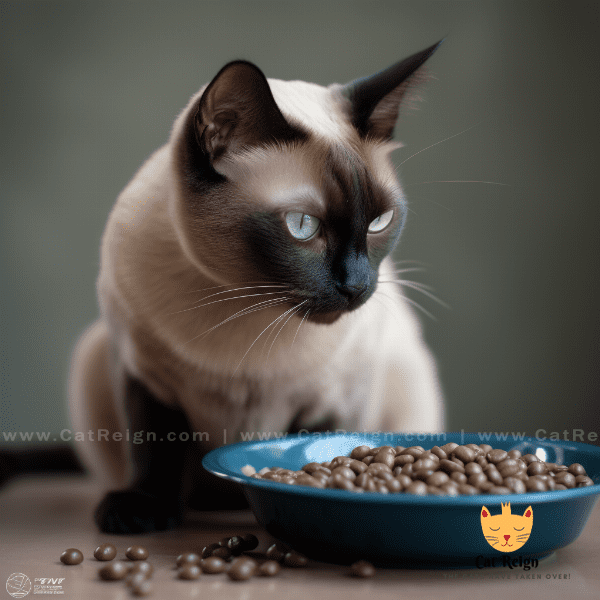
Exercise and Playtime for Burmese Cats
Regular exercise and playtime are important for the health and happiness of your Burmese cat. As an energetic and playful breed, Burmese cats require daily exercise and mental stimulation to prevent boredom and promote physical fitness. Here are some tips for exercising and playing with your Burmese cat:
Playtime
Burmese cats are known for their playful personalities and enjoy playing with toys and interacting with their owners. Some favorite toys for Burmese cats include balls, stuffed animals, and interactive toys that stimulate their natural hunting instincts. Set aside time each day to play with your cat to prevent boredom and promote mental stimulation.
Indoor vs. Outdoor
While Burmese cats enjoy spending time outdoors, it is important to keep them safe and protect them from potential dangers, such as cars or predators. Providing your cat with plenty of indoor play opportunities is a great way to keep them active and entertained. Consider setting up a cat tree, scratching post, or play tunnel to provide your cat with an indoor playground.
Exercise
In addition to playtime, Burmese cats require regular exercise to maintain their physical fitness. Activities such as climbing, jumping, and running can help keep your cat healthy and prevent obesity. Consider providing your cat with plenty of space to play and explore, such as a large room or an enclosed outdoor area.
Interactive Play
Interactive play is an excellent way to bond with your Burmese cat and provide them with mental stimulation. Consider playing hide-and-seek with your cat, using interactive puzzle toys, or training them to perform tricks. These activities can help keep your cat engaged and entertained.
Conclusion
In conclusion, regular exercise and playtime are essential for the health and happiness of your Burmese cat. Providing your cat with plenty of indoor play opportunities, regular exercise, and interactive play can help prevent boredom, promote physical fitness, and strengthen your bond with your cat. If you have any concerns about your cat’s exercise needs, it is important to consult with your veterinarian.

Grooming Your Burmese Cat
Burmese cats have a short, shiny coat that requires minimal grooming. However, regular grooming is still important to maintain your cat’s health and appearance. Here are some tips for grooming your Burmese cat:
Brushing
Burmese cats have a short, fine coat that sheds minimally. However, regular brushing can help remove loose fur and prevent hairballs. Use a soft-bristled brush to gently brush your cat’s coat once or twice a week. This can also help distribute natural oils throughout your cat’s coat and promote healthy skin.
Bathing
Burmese cats do not require frequent baths, as their coat is naturally self-cleaning. However, if your cat gets into something dirty or smelly, a bath may be necessary. Use a mild cat shampoo and warm water to bathe your cat, being careful to avoid getting water in their ears or eyes.
Nail Trimming
Regular nail trimming is important for the health and safety of your Burmese cat. Overgrown nails can become painful or cause difficulty walking. Trim your cat’s nails every few weeks using a sharp pair of nail clippers. Be sure to avoid cutting the quick, which is a vein that runs through the center of the nail.
Dental Care
Good dental hygiene is important for the overall health of your Burmese cat. Brush your cat’s teeth regularly using a soft-bristled toothbrush and toothpaste designed specifically for cats. This can help prevent dental problems, such as gum disease and tooth decay.
Conclusion
In conclusion, grooming your Burmese cat is an important part of their overall care. Regular brushing, occasional baths, nail trimming, and dental care can help maintain your cat’s health and appearance. If you have any concerns about grooming your Burmese cat, it is important to consult with your veterinarian.
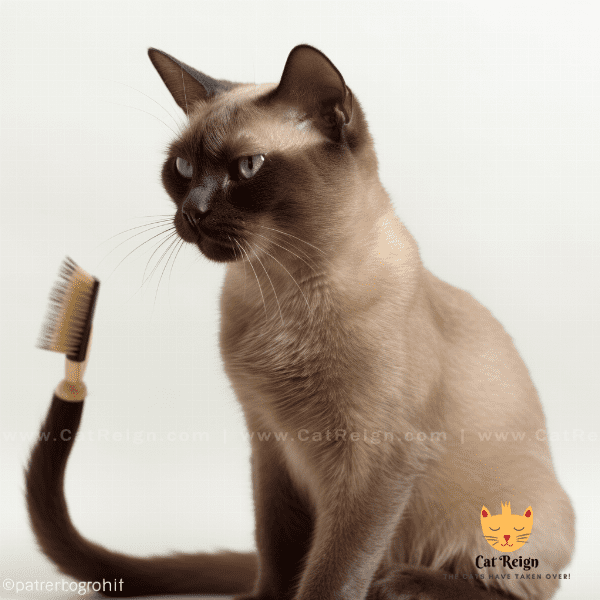
Common Health Issues in Burmese Cats
Like all breeds of cats, Burmese cats can be prone to certain health issues. It is important to be aware of these issues and take steps to prevent or manage them. Here are some common health issues that Burmese cats may experience:
Hypertrophic Cardiomyopathy
Hypertrophic cardiomyopathy (HCM) is a common heart condition in Burmese cats. It is a genetic disease that causes thickening of the heart muscle, which can lead to heart failure if left untreated. Regular check-ups with a veterinarian can help detect and manage this condition.
Diabetes
Burmese cats are also prone to developing diabetes, a condition that affects the body’s ability to regulate blood sugar levels. Symptoms of diabetes in cats include increased thirst and urination, weight loss, and lethargy. Diabetes can be managed with proper diet and medication.
Feline Lower Urinary Tract Disease
Feline lower urinary tract disease (FLUTD) is a common condition in cats that can cause difficulty urinating and other symptoms. Burmese cats may be more prone to this condition due to their genetics. Treatment for FLUTD may include medication, dietary changes, and increased water intake.
Dental Problems
Burmese cats may be more prone to dental problems, such as gingivitis and periodontal disease. Regular dental care, including brushing your cat’s teeth and providing dental treats or toys, can help prevent these issues.
Conclusion
In conclusion, Burmese cats can be prone to certain health issues, including hypertrophic cardiomyopathy, diabetes, feline lower urinary tract disease, and dental problems. It is important to be aware of these issues and take steps to prevent or manage them. Regular check-ups with a veterinarian, a balanced and nutritious diet, and proper dental care can help keep your Burmese cat healthy and happy.

Training Your Burmese Cat: Tips and Tricks
Training your Burmese cat can be a fun and rewarding experience for both you and your cat. With patience and consistency, you can teach your cat a variety of tricks and behaviors. Here are some tips and tricks for training your Burmese cat:
Positive Reinforcement
Positive reinforcement is an effective training method for cats. This involves rewarding your cat for desired behaviors, such as using a scratching post or using the litter box. Rewards can include treats, praise, or playtime.
Clicker Training
Clicker training is a popular training method that uses a clicker to signal to your cat that they have performed a desired behavior. This method can be used to train a variety of behaviors, such as sitting, staying, and coming when called.
Litter Box Training
Litter box training is an important behavior to teach your Burmese cat. Show your cat where the litter box is located and encourage them to use it by placing them in the box after meals or playtime. Reward your cat when they use the litter box properly.
Leash Training
Leash training your Burmese cat can allow them to safely explore the outdoors while under your supervision. Start by introducing your cat to a harness and leash indoors, then gradually move outside to a safe and enclosed area. Reward your cat for walking on the leash and following commands.
Conclusion
In conclusion, training your Burmese cat can be a fun and rewarding experience. Positive reinforcement, clicker training, litter box training, and leash training are all effective methods for training your cat. With patience and consistency, you can teach your cat a variety of tricks and behaviors. If you have any concerns about training your Burmese cat, it is important to consult with your veterinarian.
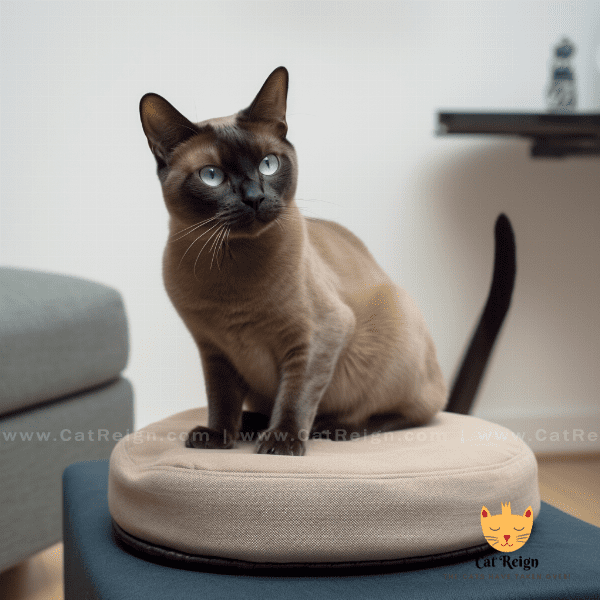
Burmese Cats and Other Pets: Compatibility Guide
Burmese cats are known for their friendly and social personalities. They often get along well with other cats and pets, making them a great choice for multi-pet households. However, it is important to introduce your Burmese cat to other pets slowly and carefully to ensure a smooth transition. Here is a compatibility guide for Burmese cats and other pets:
Other Cats
Burmese cats generally get along well with other cats, but it is important to introduce them slowly and gradually. Start by keeping the cats in separate rooms and allowing them to smell each other through a closed door. Gradually allow them to interact while closely monitoring their behavior. Reward them for positive interactions and separate them if any aggression occurs.
Small Animals
Burmese cats have a strong prey drive and may not be compatible with small animals, such as hamsters or rabbits. It is important to closely supervise any interactions between your cat and small animals, and keep them separated if necessary.
Conclusion
In conclusion, Burmese cats can be great companions for other pets if introduced properly. Introduce them slowly and gradually, and closely monitor their interactions. Reward them for positive behavior and separate them if any aggression occurs. If you have any concerns about introducing your Burmese cat to other pets, it is important to consult with your veterinarian or a professional animal behaviorist.
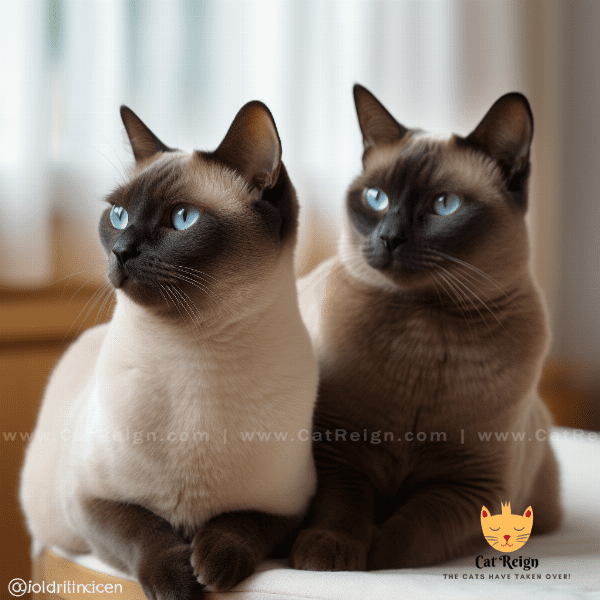
Finding the Perfect Burmese Cat for Your Home.
If you are considering adding a Burmese cat to your household, there are a few things to consider to ensure that you find the perfect match for your lifestyle and personality. Here are some tips for finding the perfect Burmese cat for your home:
Research Breeder or Rescue
When looking for a Burmese cat, research reputable breeders or rescue organizations. A reputable breeder will provide you with information about the cat’s health history and temperament. Rescue organizations may have cats that have been evaluated for their temperament and behavior in a home environment.
Consider Your Lifestyle
Consider your lifestyle and personality when choosing a Burmese cat. Burmese cats are social and enjoy human companionship, so if you have a busy lifestyle or are away from home frequently, consider adopting a pair of cats to keep each other company.
Meet the Cat
Before adopting a Burmese cat, arrange to meet the cat in person. This will give you a chance to observe their behavior and personality, and determine if they are a good match for your home.
Health Check
Be sure to have the cat checked by a veterinarian before bringing them home. This can help detect any health issues and ensure that the cat is healthy and ready for adoption.
Conclusion
In conclusion, finding the perfect Burmese cat for your home requires research and careful consideration. Research reputable breeders or rescue organizations, consider your lifestyle and personality, meet the cat in person, and have them checked by a veterinarian before adoption. With these tips in mind, you can find the perfect Burmese cat companion for your home.
